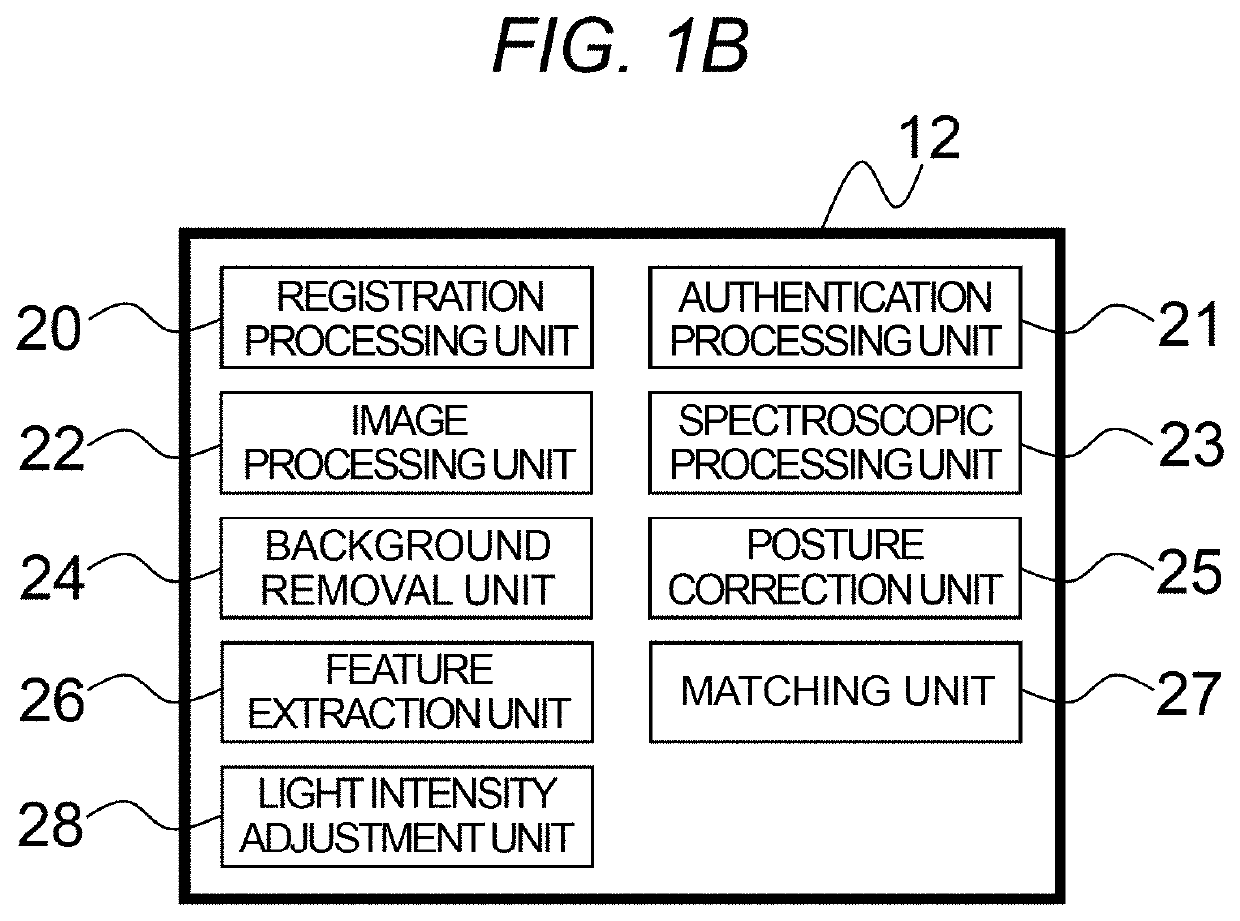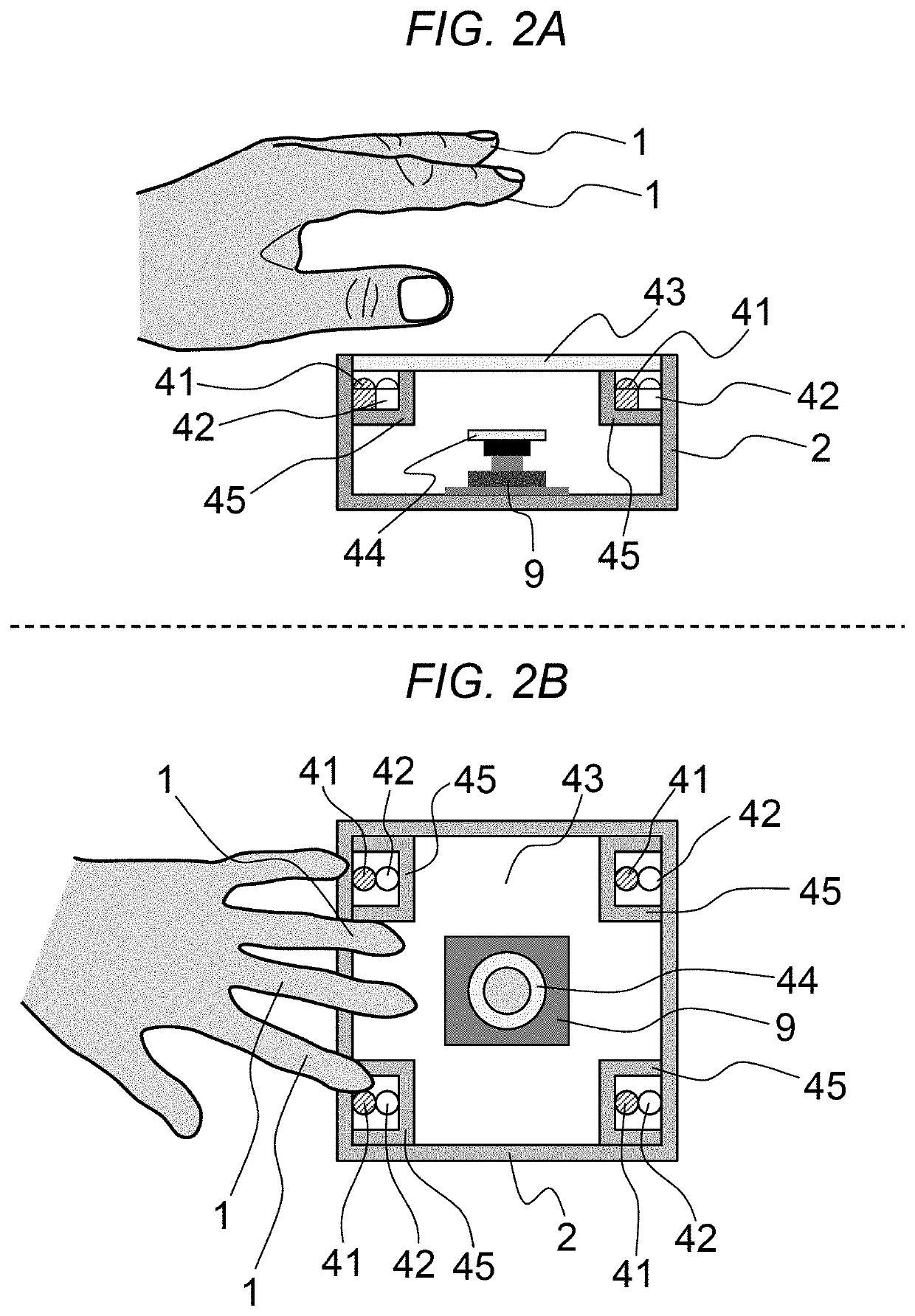Biometric authentication device and biometric authentication method
- Summary
- Abstract
- Description
- Claims
- Application Information
AI Technical Summary
Benefits of technology
Problems solved by technology
Method used
Image
Examples
first embodiment
[0037]FIG. 1A shows an example of the overall configuration of a biometric authentication system 1000 that uses the biometric features of the fingers of a hand in the present embodiment. It goes without saying that the configuration of the present embodiment is not a system, but may be configured as a device with all or part of the configuration mounted on a chassis. The device may be a personal authentication device that includes authentication processing, or it may be a finger image acquisition device or finger feature image extraction device that specializes in acquiring finger images while authentication processing is performed outside the device. It may also be implemented as a terminal. A configuration with at least an imaging unit that captures images of a living body and an authentication processing unit that processes the captured images and authenticates the living body is called a biometric authentication device.
[0038]The biometric authentication system 1000 shown in FIG....
second embodiment
[0091]A second embodiment is an embodiment of a technology that uses the image capturing device shown in the first embodiment and images of a subject consisting of multiple wavelengths to estimate the range between the camera and the subject pixel by pixel, and uses this information to correct and guide the deformation of the subject, thereby increasing the accuracy of biometric authentication.
[0092]FIGS. 9A and 9B show the principle of range measurement of a subject using visible light and infrared light images. In the present embodiment, a living body is photographed by light sources of different wavelengths. In general, the optical characteristics of the camera lens, such as the refractive index, differ slightly for each wavelength, so the image formation position and focus may differ for each wavelength. Therefore, when images are checked at different wavelengths, the image at one wavelength may be in focus, but the image at the other wavelength may be out of focus and blurred, ...
third embodiment
[0102]A third embodiment describes an example of an authentication device based on the technology illustrated in the first and the second embodiment, which is non-contact, intuitively guides the user to the position where the biometric is presented, and is robust to changes in environmental lighting.
[0103]FIGS. 11A and 11B show an embodiment of a biometric authentication device that performs contactless authentication by guiding the position of a fingertip. A camera 9 is equipped inside the input device 2, and visible light sources 41 and infrared light sources 42 are arranged in a circle around it. The visible light sources 41 and the infrared light sources 42 can irradiate light uniformly to the finger 1 held above, and the intensity of each light source can be controlled independently as shown in the first embodiment. Although only one finger is shown in FIGS. 11A and 11B, as in the first embodiment above, multiple fingers can be used, for example, just one index finger.
[0104]Two...
PUM
 Login to View More
Login to View More Abstract
Description
Claims
Application Information
 Login to View More
Login to View More - R&D
- Intellectual Property
- Life Sciences
- Materials
- Tech Scout
- Unparalleled Data Quality
- Higher Quality Content
- 60% Fewer Hallucinations
Browse by: Latest US Patents, China's latest patents, Technical Efficacy Thesaurus, Application Domain, Technology Topic, Popular Technical Reports.
© 2025 PatSnap. All rights reserved.Legal|Privacy policy|Modern Slavery Act Transparency Statement|Sitemap|About US| Contact US: help@patsnap.com



